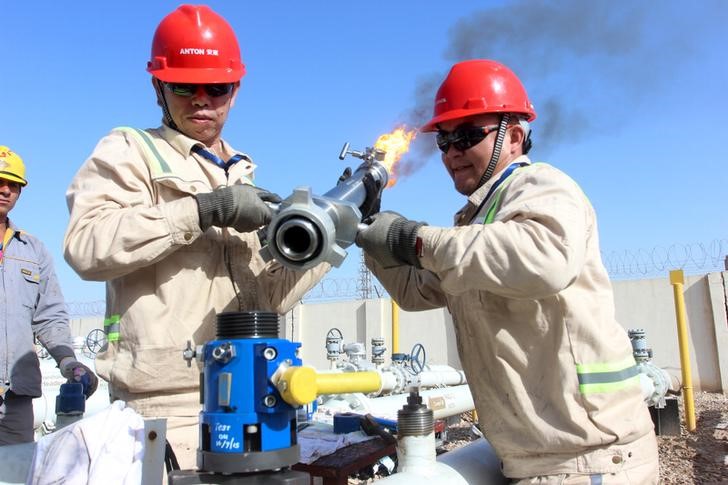TOKYO (Reuters) - Oil prices climbed for the first time in three days on Wednesday, but rising supply and fears over the outlook for demand amid the U.S.-China trade war kept pressure on the market.
Brent crude (LCOc1) futures had gained 36 cents, or 0.5 percent, to $76.27 a barrel by 0110 GMT. They fell 1.8 percent on Tuesday, at one point touching their lowest since Aug. 24 at$75.09 a barrel.
U.S. West Texas Intermediate (WTI) crude (CLc1) futures advanced 27 cents, or 0.4 percent, to $66.45 a barrel on Wednesday. They dropped 1.3 percent the day before, after hitting their weakest since Aug. 17 at $65.33 a barrel.
Both crude benchmarks have fallen about $10 a barrel from four-year highs reached in the first week of October, and are on track to post their worst monthly performance since July 2016.
Oil has been caught in the global financial market slump this month, with equities under pressure from the trade fight between the world's two largest economies.
U.S. President Donald Trump said on Monday he thinks there will be "a great deal" with China on trade but warned that he has billions of dollars worth of new tariffs ready to go if a deal is not possible.
Trump said he would like to make a deal now but that China was not ready. He did not elaborate.
The United States has already imposed tariffs on $250 billion worth of Chinese goods, and China has responded with retaliatory duties on $110 billion worth of U.S. goods.
In a bearish signal, the American Petroleum Institute reported U.S. crude inventories rose 5.7 million barrels last week, more than analyst forecasts for a 4.1 million-barrel build.
Investors will look to official government data on U.S. inventories due on Wednesday.
Meanwhile, the International Energy Agency (IEA) said high oil prices were hurting consumers and could dent fuel demand at a time of slowing global economic activity.
Oil production from Russia, the United States and Saudi Arabia reached 33 million barrels per day (bpd) for the first time in September, Refinitiv Eikon data showed.
